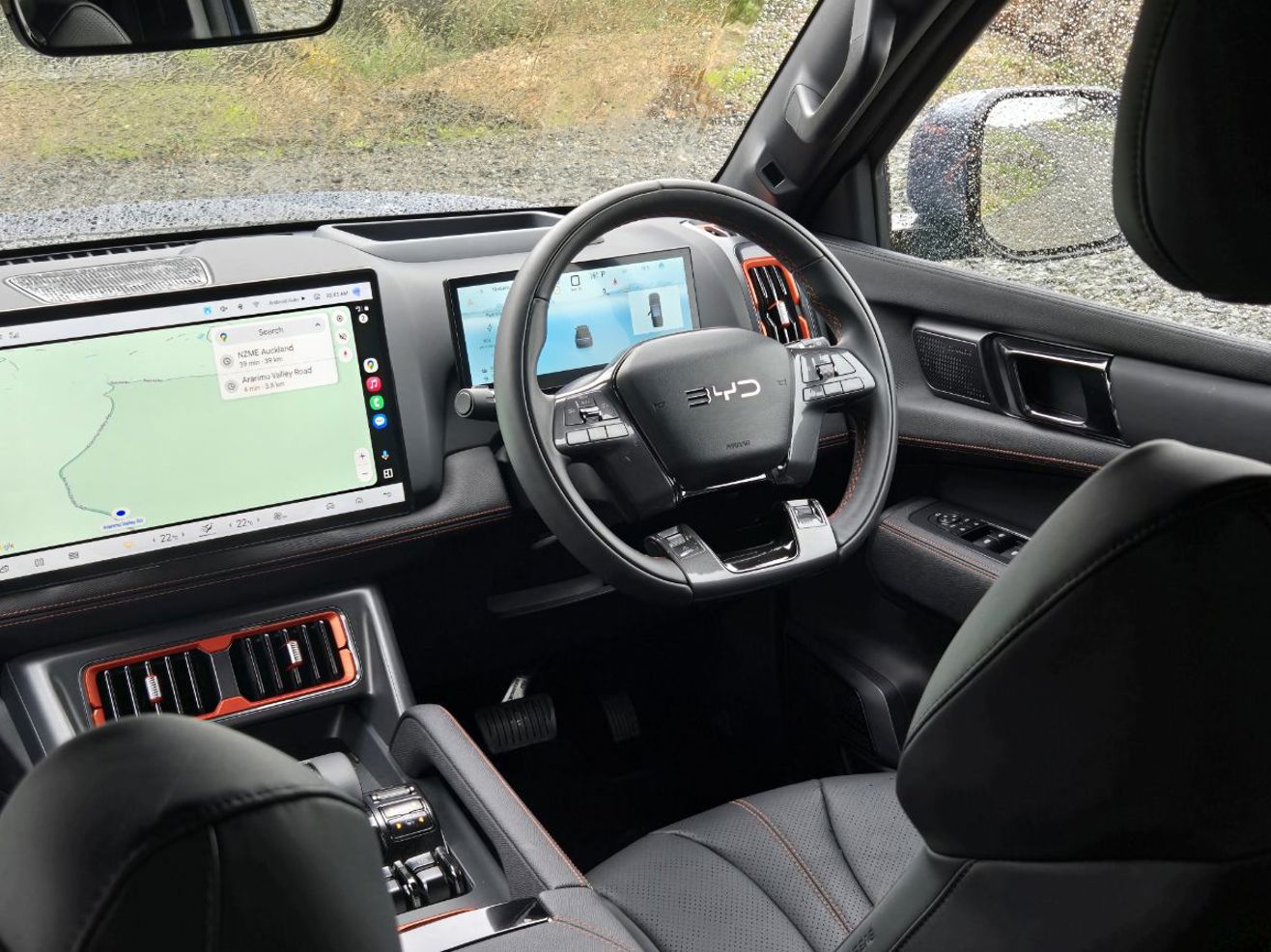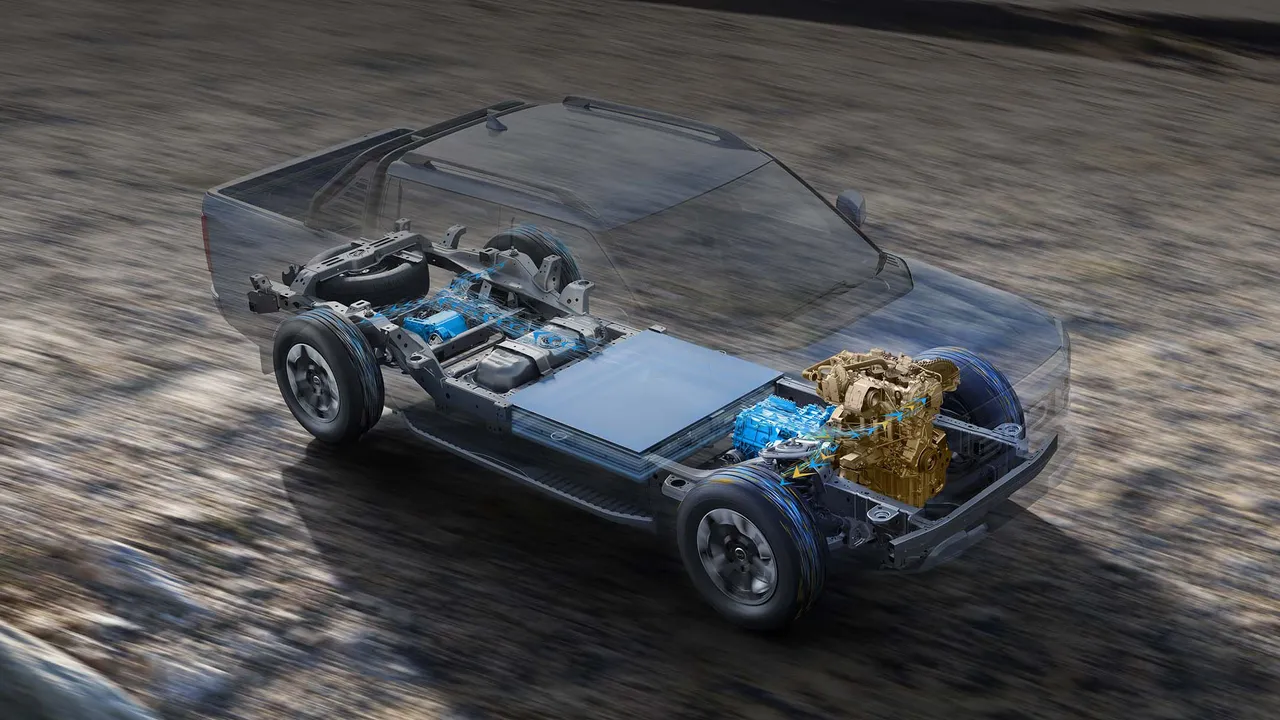- Kia Tasman and BYD Shark 6 bring electrified power to Australia’s ute market.
- BYD Shark 6 is Australia’s first plug-in hybrid ute, packed with tech.
- Kia Tasman goes bold, arriving as the first Korean 4×4 dual-cab.
New utes from Kia and BYD are reshaping the Australian pick-up market — literally. Here’s why buyers of the Ford Ranger, Toyota HiLux, and other top dual-cabs should pay attention. Officially launched within hours of each other, the Kia Tasman and BYD Shark 6 have changed the face of Australian utes almost overnight.
The Kia Tasman is the first conventional 4×4 dual-cab pick-up sold by a mainstream Korean brand Down Under — and it arrives with a face only its mother could love. The BYD Shark 6 is Australia’s first plug-in hybrid dual-cab ute, beating promised entrants from brands like Ford and GWM by months (if not years) and likely undercutting them on price.
BYD Shark 6: An Electrified Ute at a Competitive Price
BYD announced an introductory price for the Shark 6 dual-cab at A$57,900. To put this in context, it’s about the same price as a mid-spec turbodiesel four-cylinder Ford Ranger, Toyota HiLux, or Mitsubishi Triton. Yet, with 321kW and 650Nm, the plug-in hybrid BYD not only significantly out-powers the incumbents (it’s even faster than the turbo V6 Ford Ranger Raptor to 100 km/h!), but also delivers a level of tech the others can only dream of — for now.
The Shark 6 is essentially a range-extended electric ute. A 1.5-litre turbo four-cylinder petrol engine and electric motor power the front wheels, with the petrol engine primarily acting as a generator to keep the modest 29.6kWh battery charged. A second electric motor powers the rear axle.
You can plug it in to charge the battery, but there’s no dual-range gearbox — something most mainstream 4x4s rely on for off-road capability (except the previous generation Amarok). In fact, like most battery-electric vehicles, there’s no multi-speed gearbox at all. What the Shark 6 does have, however, is tech. Digital instruments, BYD’s trademark swivelling centre screen, and a host of on- and off-road driver aids are included.

A New Face for the Kia Brand
With styling that resembles either something out of Futurama or an unfinished LEGO project, the Kia Tasman has certainly captured attention. Conventional it ain’t. Its looks are likely to polarise opinion, but it stands out in the current crop of dual-cabs.
Related Stories
The Tasman is a big deal for Kia — and for Hyundai, thanks to the companies’ shared lineage. Utes are big business in Australia, with multiple dual-cabs models regularly among the top-selling new vehicles each month.

Kia and Hyundai have held strong top-five positions in Australian new car sales without utes, so the Tasman and an inevitable Hyundai counterpart will mark a major shift for both brands Down Under. For BYD, already one of the fastest-growing brands in the Australian marketplace, the Shark 6 delivers an opportunity to attract buyers it’s never engaged.
Kia Tasman: Under the Hood
If the BYD Shark 6 is mechanically innovative, the Kia Tasman takes a more traditional approach — at least for now, though hybrid and EV versions are likely to follow. Underneath, the Kia’s LEGO-like exterior conceals specs that closely match those of the Ranger and HiLux.
Under the hood is a 2.2-litre turbodiesel engine like the one powering the Kia Sorento and Hyundai Santa Fe, with options for a six-speed manual or eight-speed auto. Suspension is independent in the front, with a leaf-sprung live axle rear setup — again, typical ute fare.

This conventional suspension configuration gives the Tasman a 3500kg braked towing capacity, a standard in the Australian ute market. Meanwhile, BYD has already flagged plans to increase the Shark 6’s initial 2500kg towing rating.
Range, Power, and Torque
Where the Tasman falls slightly behind in comparison is its power and torque outputs. Peak power is just 154kW with peak torque at 441Nm. This is adequate but won’t be a major selling point for Kia. Fuel consumption for the Kia is competitive at a claimed 7.6L/100km.
Here’s where the plug-in BYD has a distinct edge (if you charge the battery regularly). The BYD Shark 6’s official fuel consumption is 2.0L/100km, thanks to the way plug-in hybrids are measured. Real-world use will likely yield similar fuel consumption to the Kia if the battery isn’t charged regularly.

BYD claims an EV-only range of 100km for the Shark 6. You’ll likely get around 75km depending on load and driving style, making it feasible to commute daily without burning a drop of fuel. The V2L (vehicle-to-load) capability allows you to power or charge tools directly from the ute’s tray. Electrified utes like the Shark 6 will change the game for tradies.
What’s Next for Australian Utes?
Kia hasn’t announced pricing for the Tasman dual-cab, and likely won’t until closer to its launch in late 2025. For now, the Tasman will only be available in diesel but three variants will be offered: base, X-Line, and X-Pro. Kia will aim for competitive pricing within the established dual-cab market, where buyers are known for their loyalty to proven models.
For now, the BYD Shark 6 is offered in a single, well-equipped model. Early 2025 may see the arrival of other electrified utes, with GWM expected to launch a plug-in version of its Cannon Alpha.

Both new utes are set to appeal to both urban and traditional ute buyers. Kia has a dedicated following in Australia, built on a reputation for long warranty periods, reliability, and refined on-road manners. It remains one of the few brands to prioritize local suspension and steering tuning.
The BYD Shark 6’s advanced tech and electrified drivetrain will appeal to buyers looking for a unique take on the work-to-weekend vehicle or family trickster. So, two new utes. Two new choices. And in the land where too many utes is just enough, there’s more to come.
